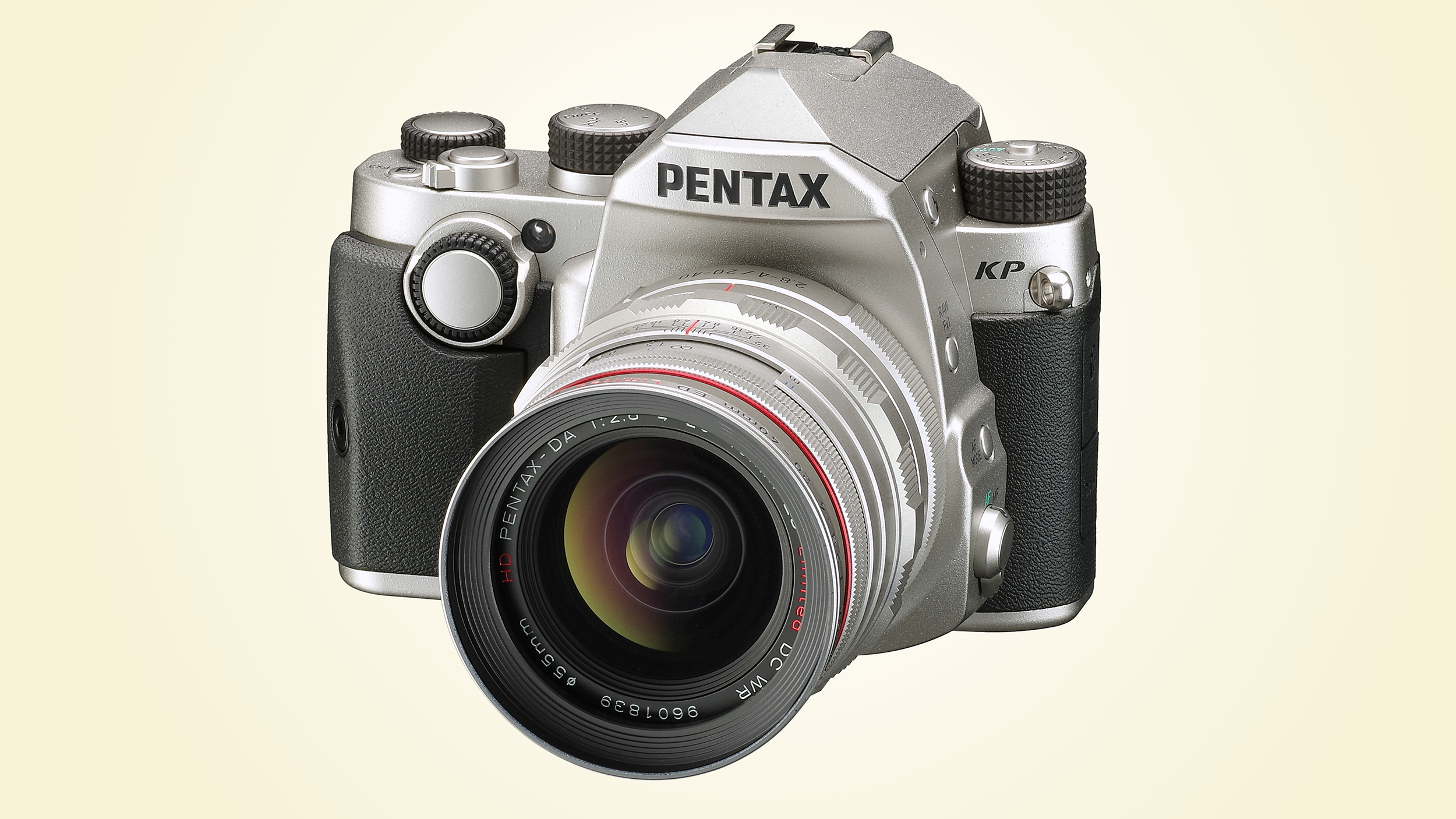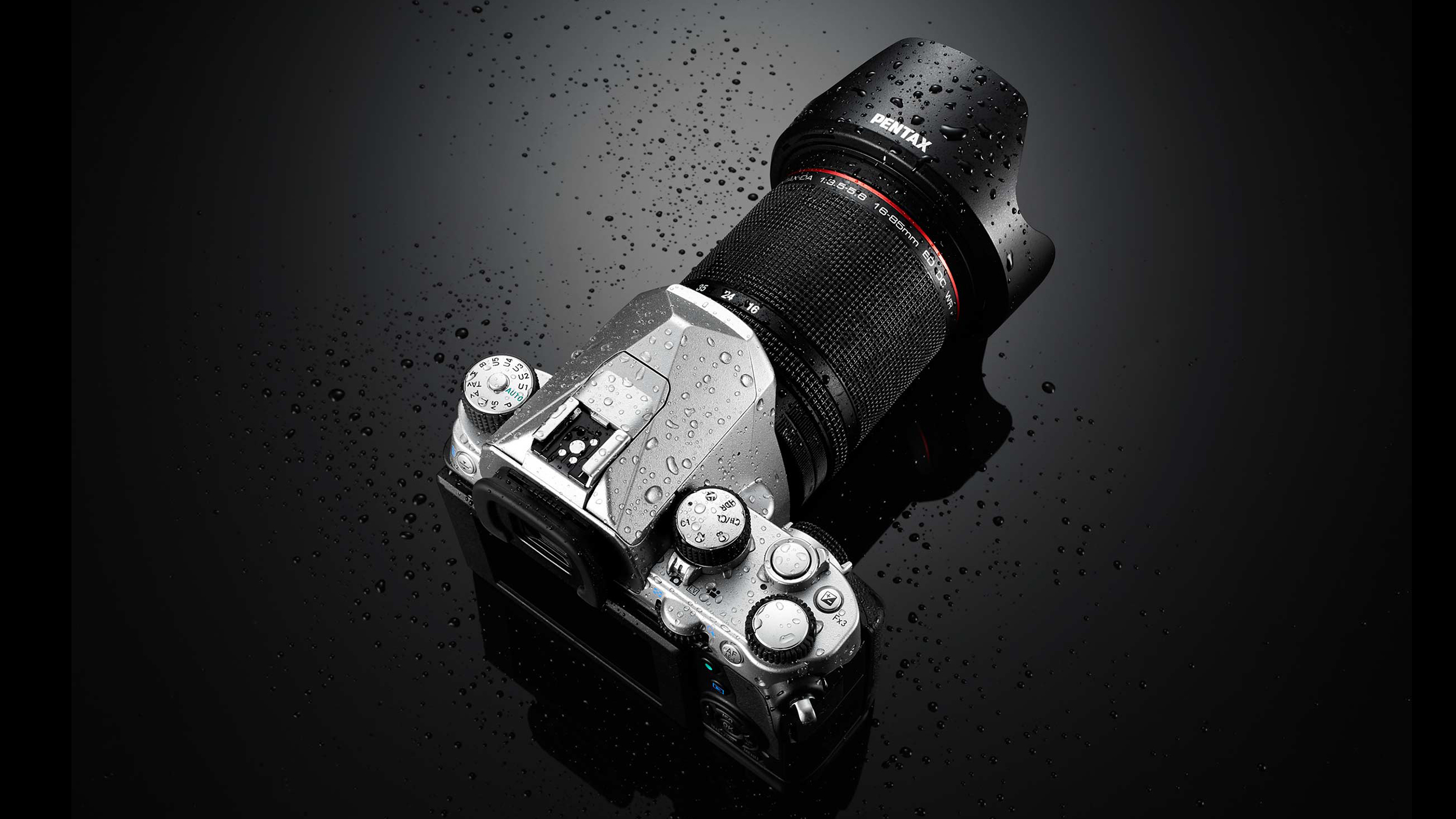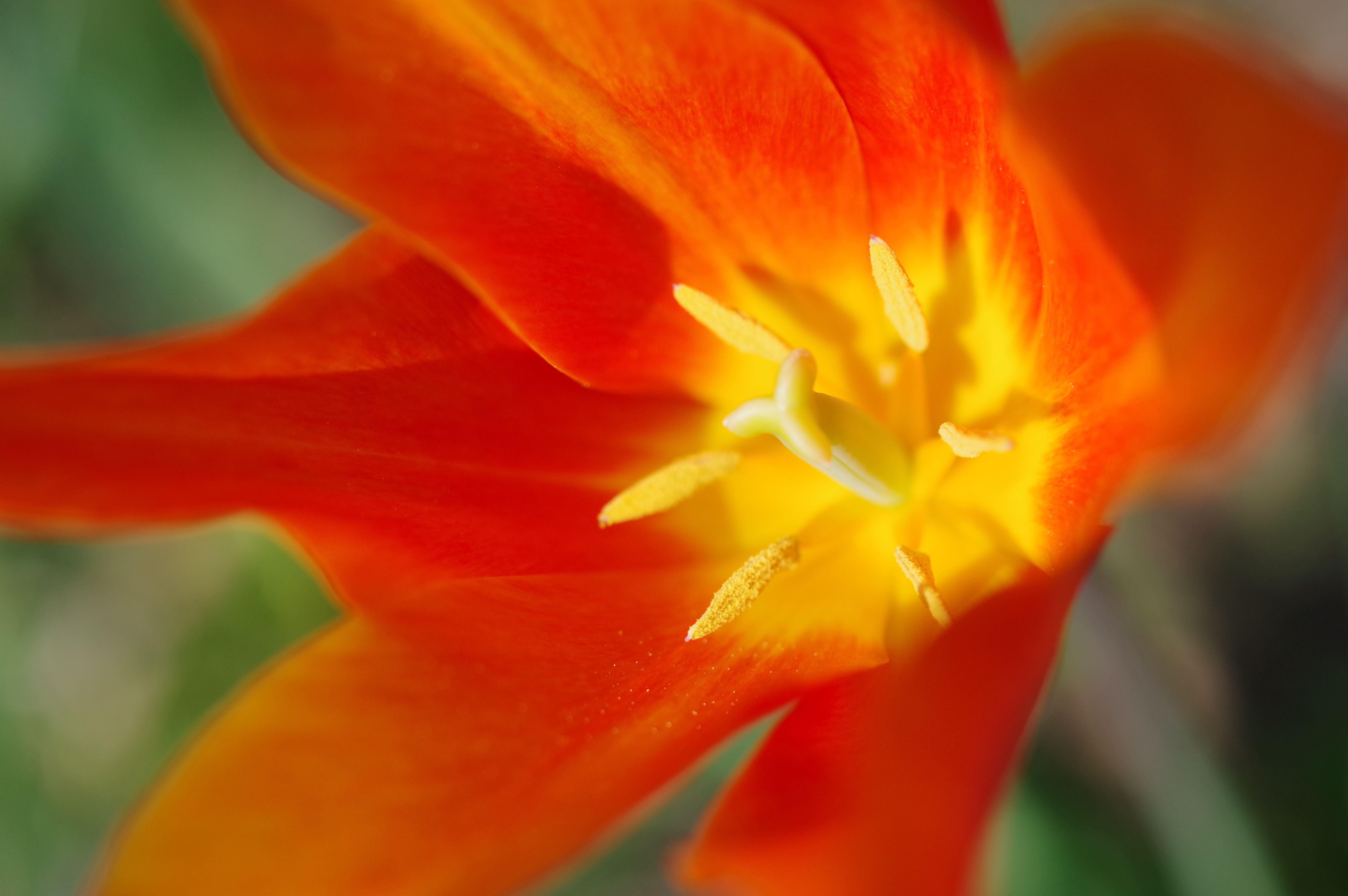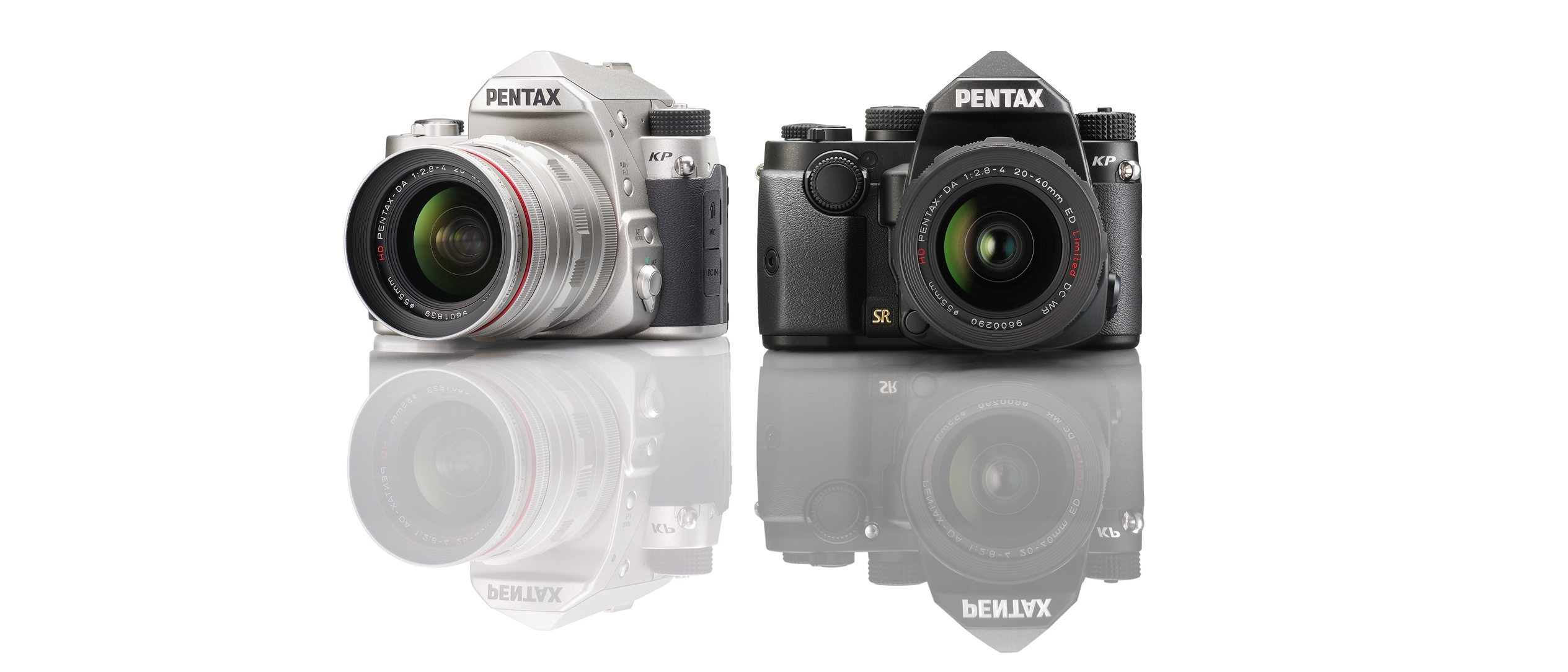Why you can trust TechRadar
Build and handling
- Dust- and weather-resistant
- Alternative grips
- Weighs 703g
Without a lens, the Pentax KP measures a fairly compact 101 x 135 x 86mm. However, its weight of 703g with battery and card in place is heavier than we'd expect for such a small body. With most lenses the camera feels perfectly balanced, but larger, heavier optics can have the effect of not allowing the camera to sit flat on its base when placed on a table or other surface.
For portrait-orientation shooting, however, you can make things a little more comfortable for yourself by attaching the optional D-BG7 battery grip to the base.
If there’s one feature that really differentiates the KP from its contemporaries, it’s the facility to remove the grip and replace it with an alternative. This is somewhat unusual for a DSLR, but not entirely unexpected here when you consider the unconventional design of some previous K-mount models.

And in a way it makes a lot of sense. Clearly you may prefer a different level of support when using a relatively small and light lens to when you're pairing the camera up with a weightier telephoto one, and the camera comes supplied with three grips as standard. One has a relatively flat profile and another boasts a more substantial design, with the third offering something in between the two, and these are easily removed and replaced with the supplied hex key.
The most substantial of the three is still relatively small for such a body, but we actually found that it provided excellent handling. It’s perhaps not as secure in the hand as the deep grip on the K-70, but overall we found this paired the best with the lenses supplied for this test. It’s a bit small for something like the HD Pentax-D FA 24-70mm f/2.8ED SDM WR, but then that particular optic is not exactly designed for APS-C bodies.
The problem with the other two grips is that, although they theoretically work better with smaller and lighter lenses, the body is still relatively heavy for its size, and therefore benefits from better support than these provide.

The camera is built to high standard, thanks in part to the use of magnesium alloy panelling. This doesn't extend around the entire body, and is confined to the base plate and front and rear panels, but it has the same pleasing matte, mottled finish as the polycarbonate sections. Furthermore, thanks to 67 seals, Ricoh Imaging assures dust-proofing, weather-resistance and protection against freezing temperatures.
Sign up for breaking news, reviews, opinion, top tech deals, and more.
The Pentax KP is claimed to be dust-proof, weather-resistant and protected against freezing temperatures
In general, the Pentax KP is a very enjoyable camera to use. The design and location of the power switch makes it easy to flick it on and get shooting with one hand, and the rubberized front and rear dials both move with a pleasing fluidity. A further dial on the top plate is designed for use in conjunction with the Smart Function Dial, and this works well, although it’s a shame that some of these functions are pre-determined, as not everyone will need or want fast access to things like HDR shooting.
Although all the dials are designed well, on such a small body some of these controls feel a little cramped. The Smart Function and mode dials are positioned right next to the viewfinder housing, so you often end up bashing into this when operating either.
The rear command dial is also positioned much further into the body than on similar cameras, and left-eye shooters may find that the top of their nose is in the way when this is turned. Through the menus, however, you can customize how different exposure parameters are adjusted if you find this to be an issue.
Autofocus
- 27-point AF, 25 cross-type AF points
- Working range down to -3EV
- Solid AF performance
Ricoh Imaging has put its SAFOX 11 autofocusing module in the Pentax KP, which features 27 points in total. All but two of these, at either horizontal end of the array, are cross-type, and the system has an impressive working range down to -3EV, which theoretically means it should focus in low light with more ease than some other systems. There’s also a bright green AF assist lamp on the front plate to lend a hand when light levels dip.
The KP was supplied to us for this review with the aforementioned 24-70mm f/2.8 lens and the Pentax DA 35mm f/2.8 Macro, and each has a different focusing motor. The former is equipped with a Supersonic Drive Motor, and focusing performance with this is very good. When alternating between different focusing distances, the focusing group is driven at high speed to the approximate point of focus, although there is typically a slight delay before the camera confirms this, particularly in sub-optimum conditions and with low-contrast subjects.
Focusing with this lens is relatively silent too, which bodes well for use at weddings or in other environments where discretion is required. Focusing performance in low light isn't bad, but the AF assist lamp doesn't seem to come on as readily as those on other cameras, which would no doubt help.

The Pentax DA 35mm f/2.8 Macro lens is equipped with a more basic screw-drive motor, but focusing performance here is still very good, with the lens adjusting and confirming focus with surprising speed. For an older motor this is certainly impressive, and it's no doubt thanks in part to its elements being as light and small as they are, although it is considerably noisier than the 24-70mm f/2.8 in operation.
The two outermost points of the AF array are not cross type, and although they can hesitate and come unstuck with low-contrast subjects we actually found these worked surprisingly well in the majority of situations. The camera doesn't do quite as well when shooting in its AF-C mode, however. Not only does its focusing array cover a more limited area of the frame than those of many competitors, but it doesn't seem able to adhere to subjects reliably enough to be depended on.
When set to live view, however, focusing speeds are generally very good. The KP can't quite match the systems of many current compact system cameras, such as the Olympus OM-D E-M1 Mark II and Panasonic Lumix G80, but it’s certainly fast enough to make live view usable when it's required.
Current page: Build, handling and AF
Prev Page Introduction and key features Next Page Performance and image quality